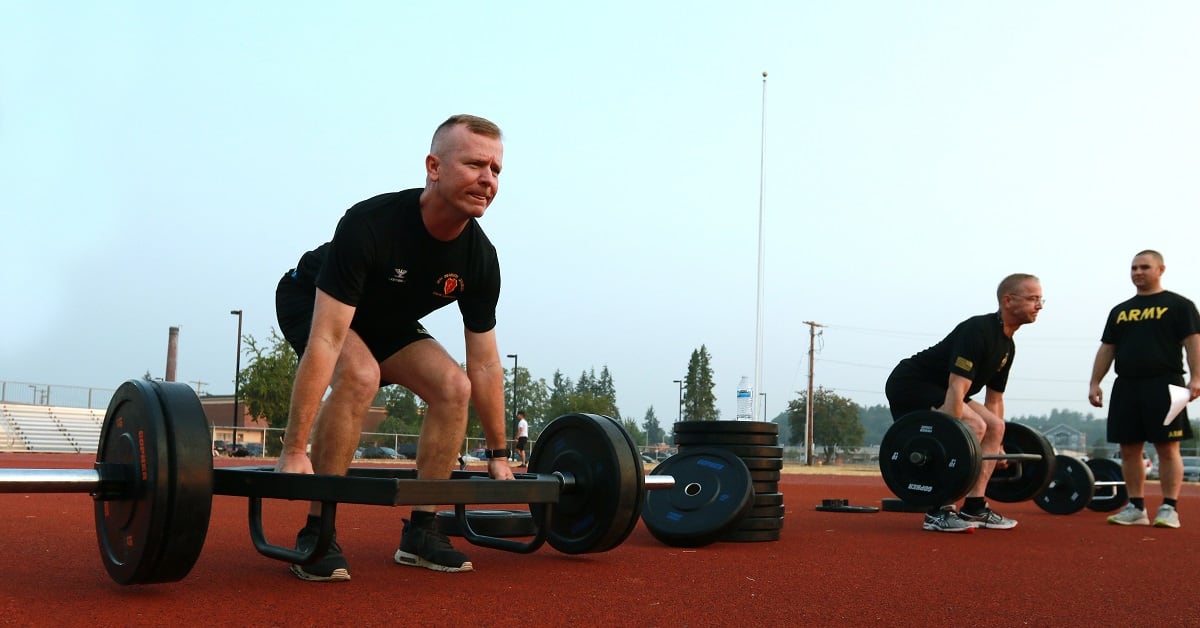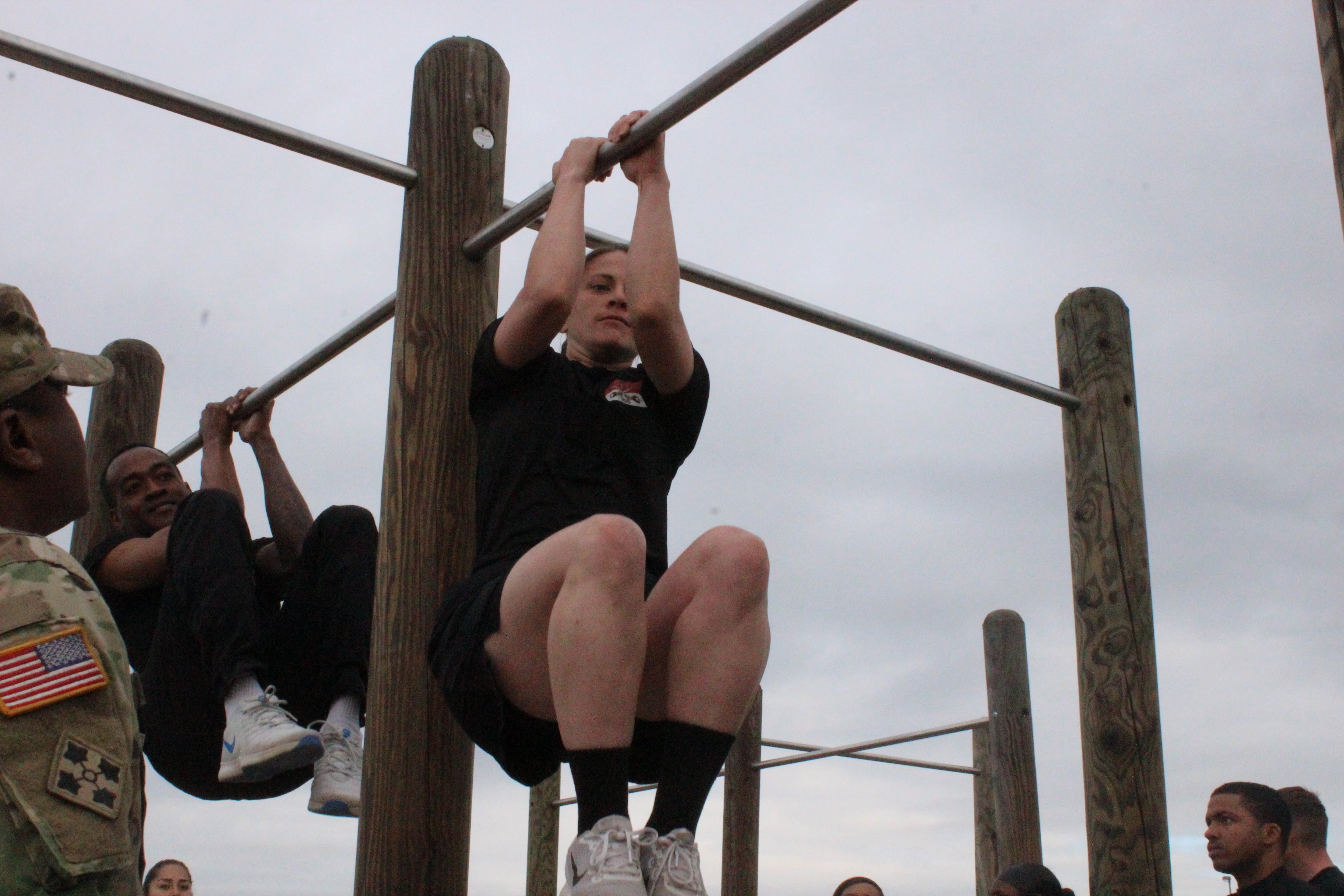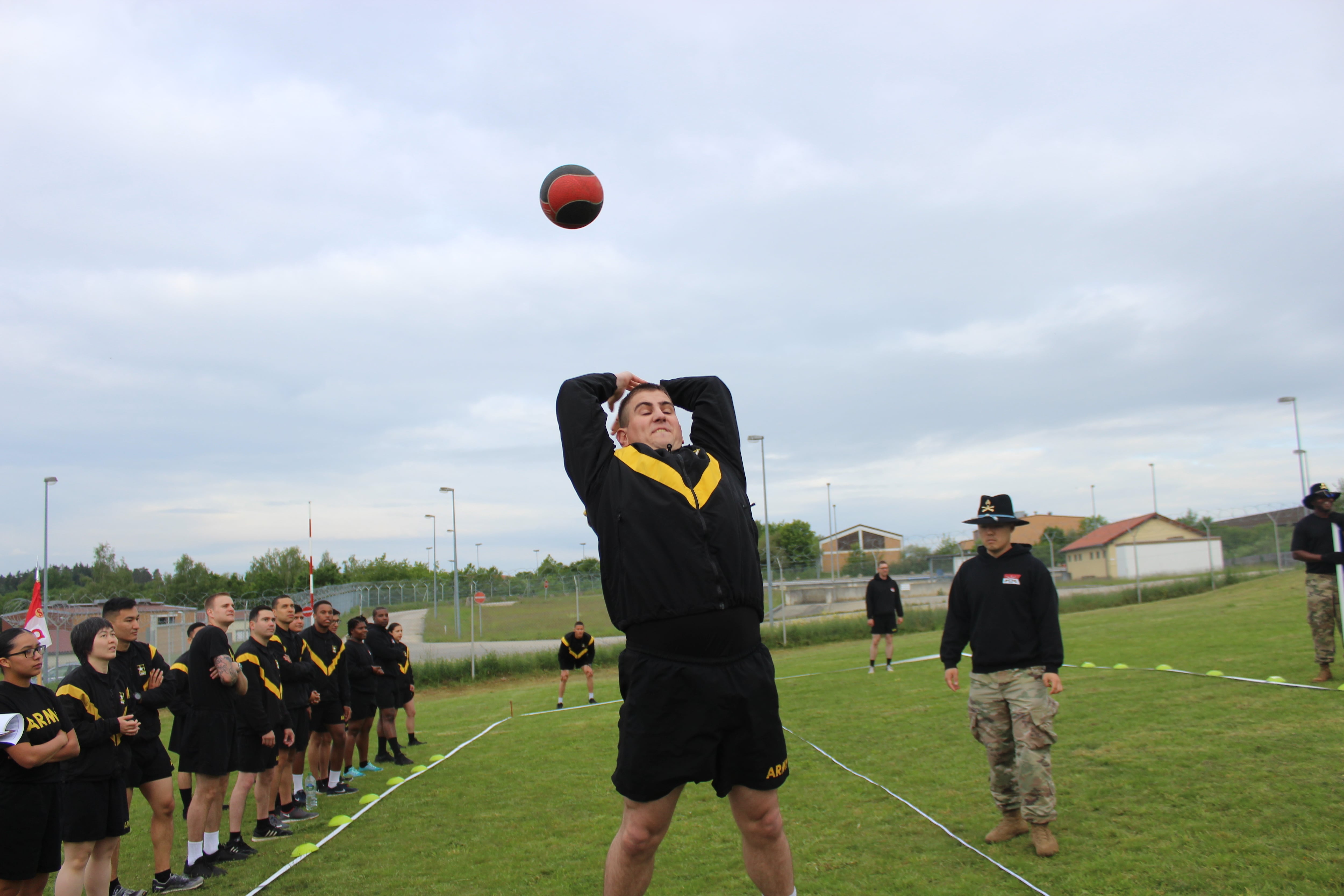The new Army Combat Fitness Test is still in its pilot program, but some feedback has been sent out to senior leaders.
Over the past year, 63 battalions across the Army Reserve, National Guard and active duty component were fielded the equipment to train for and take trial ACFTs.
By October 2019, the entire Army will take two practice ACFTs roughly six months apart. And no later than October 2020, the ACFT will become the Army physical test of record.
“They’ve [pilot battalions] been training for and taking the ACFT and we have some very good results," outgoing Sergeant Major of the Army Daniel A. Dailey said during an event at the Association of the United States Army on Wednesday. "What we found out is the two toughest events right now are the knee tuck and the overhead throw.”
The throw, in which a soldier hurls a 10-pound medicine ball backward and overhead for distance, represents tasks that require quick physical action to move gear or troops in combat.
Although the overhead throw is only 10 pounds, “it’s an exercise you just got to train for,” Dailey said.
RELATED

The leg tuck, in which a soldier hangs from a bar with an alternating grip and brings legs to chest, is designed to assess the strength of a soldier’s grip, arm, shoulder and trunk muscles. Those are key to avoiding back injuries when carrying heavy loads.
The expectation is that some soldiers will have lower aggregate scores with the new test than they did with the older one.
“When we go into this, you’re going to see some leveling out of the scores,” Dailey said. “What you’re going to see over time is the ACFT scores increase as soldiers build strength and endurance in each one of these events."
The easy part is getting soldiers better at the test over time, according to Dailey. The hard part will be all the various regulations and policies that the physical test will impact in the long-term, such as promotion boards and administrative discharges.

“I have all the confidence in the world for our soldiers to do the ACFT in the future, to get better and progress and that’s going to happen,” Dailey said. “But we got to work through and make sure we get this right.”
Training and Doctrine Command is currently working through the policy angle of the new test.
As it stands, the pilot program is helping to flesh out other aspects, as well, Dailey said.
“We’re already making some slight changes and tweaks based on what the soldiers tell us,” he added. “How we grade it, how we’re going to administer it, how much time it takes, how much equipment, and those are all resource things that we need answers to before we go live.”
A breakdown of all the events involved in the new ACFT is available on the Army’s website.
Kyle Rempfer was an editor and reporter who has covered combat operations, criminal cases, foreign military assistance and training accidents. Before entering journalism, Kyle served in U.S. Air Force Special Tactics and deployed in 2014 to Paktika Province, Afghanistan, and Baghdad, Iraq.





